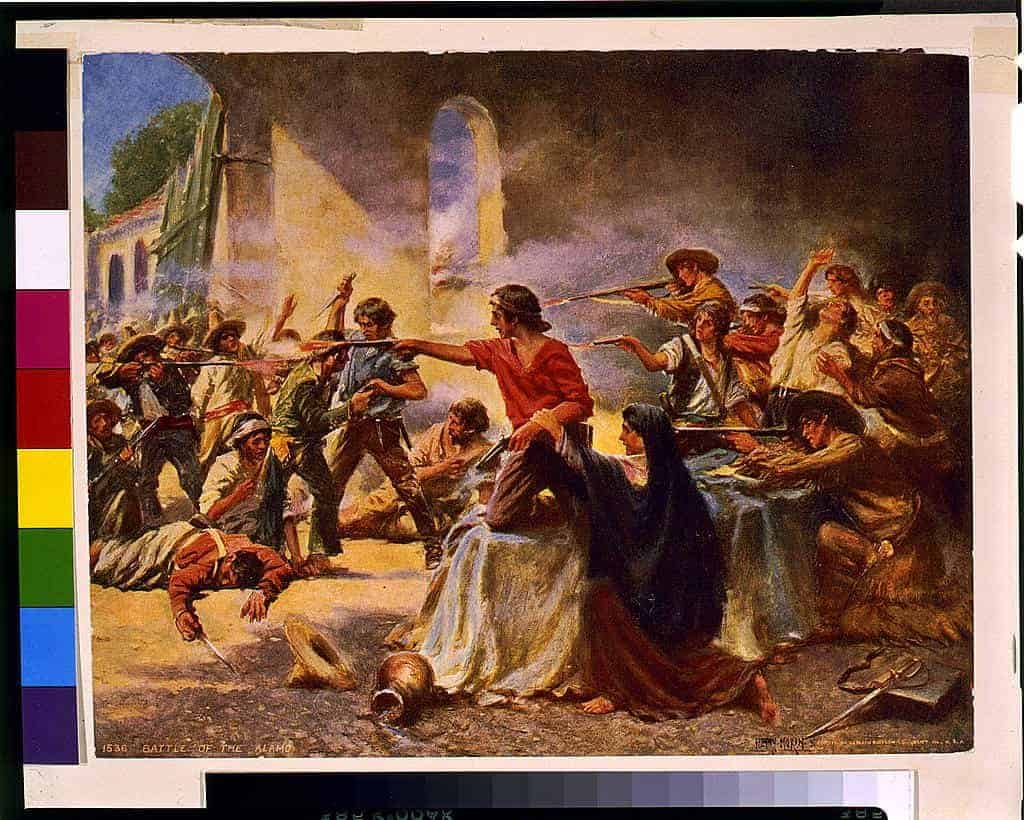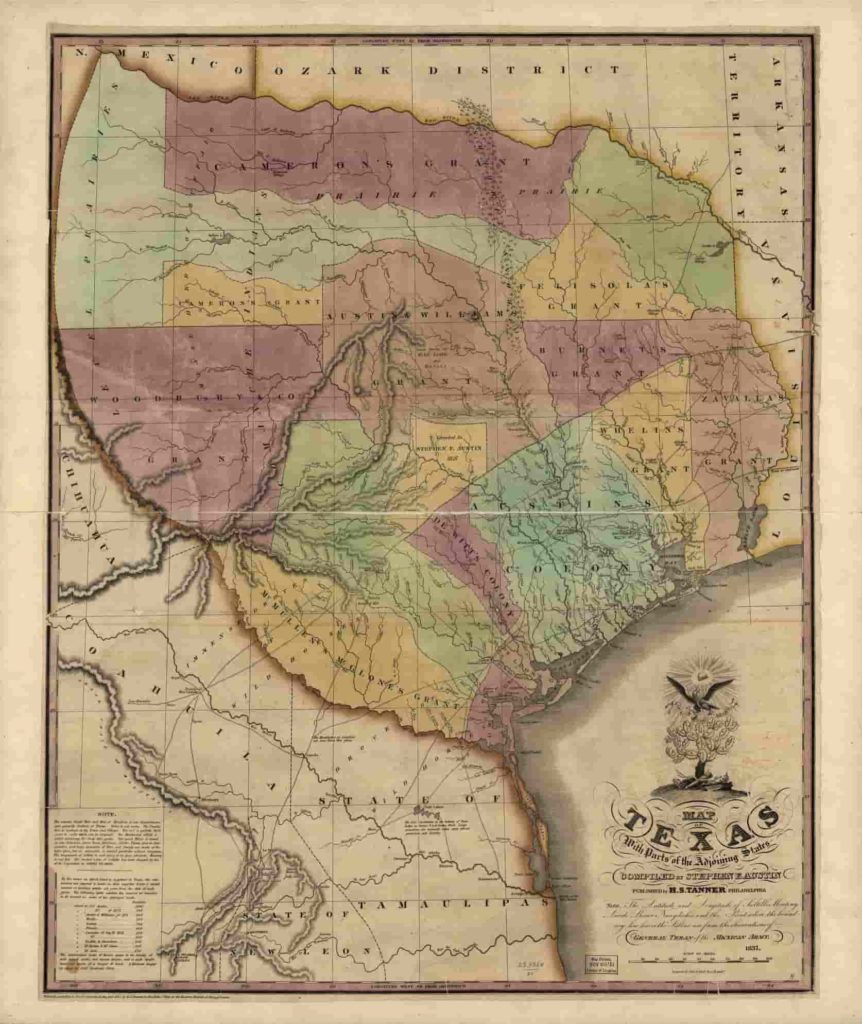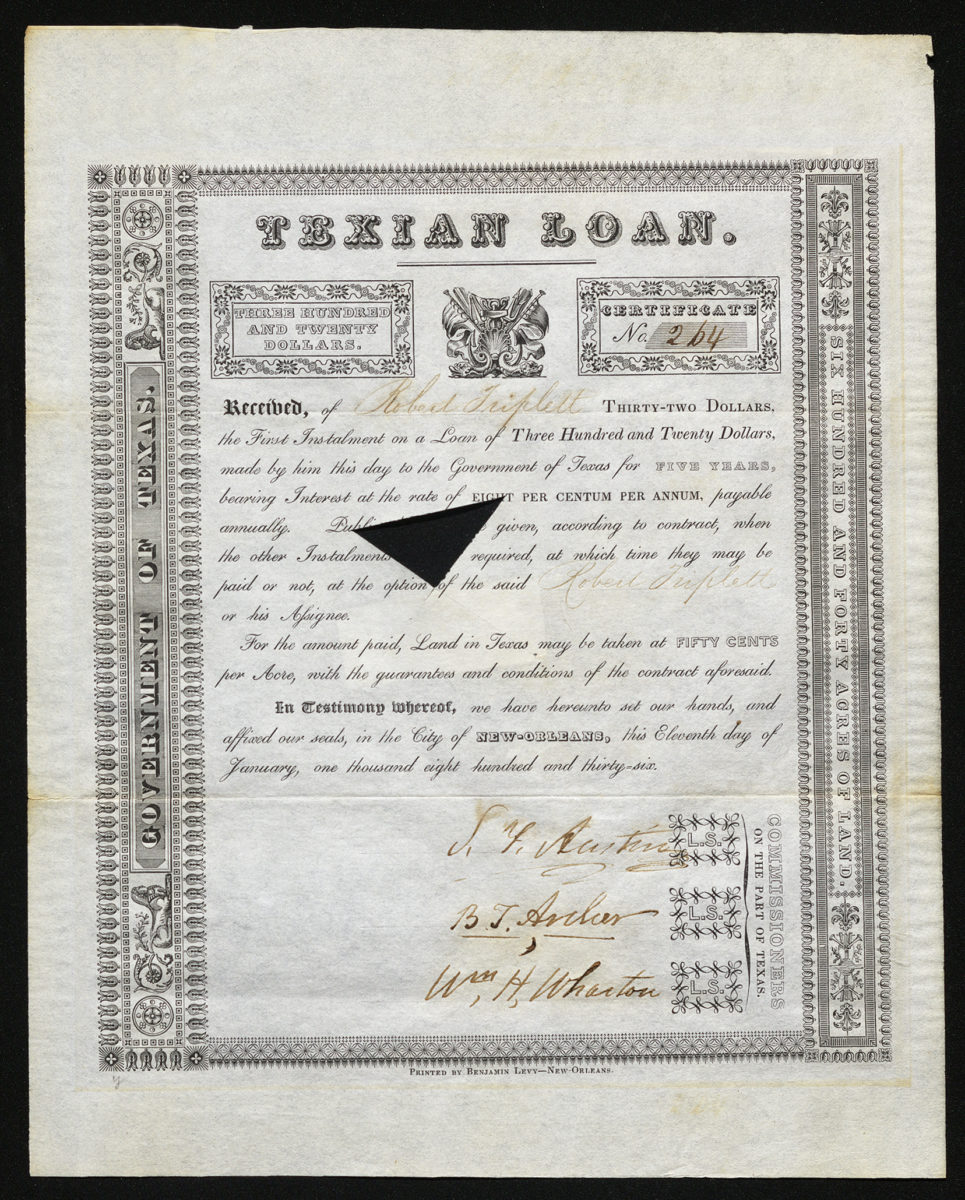
Stephen Austin and the Texas Revolution
As a cash-poor but land-rich Texas fought for autonomy from Mexico, financial schemes like the Texian Loan attempted to keep the Texas Revolution afloat. Although the Loan itself ultimately failed, the rebellion succeeded with Stephen Austin playing a major role in the Republic of Texas formally declaring independence on March 2, 1836.
Header Image: The Battle of the Alamo; author Percy Moran courtesy Library of Congress [1].
“I have learned patience in the hard School of an Empresario.”

1837 map of Texas; authors Stephen Austin and Henry Tanner courtesy Library of Congress
In late 1835, conflict was coming to a head between Mexican and Texian military forces. The first military engagement in the Texas Revolution for independence from Mexico occurred in October with the Battle of Gonzales. This was followed by the Siege of Béxar which was led by General Stephen F. Austin, the “Father of Texas” after whom the city of Austin is named. As General Santa Anna prepared his offensive to reclaim Béxar—an assault we’ve come to know as the Battle of the Alamo—Texian leaders pushed to raise capital to keep their revolution afloat.
Three central members of the Texas Revolution—Stephen F. Austin, Branch Archer, and William H. Wharton—were appointed as commissioners to the United States and organized securing financial aid for the Texian cause. Though cash-poor, Texas was land-rich; the commissioners traveled to New Orleans in January of 1836 to recruit investors to loan money to the provisional government of Texas in exchange for the opportunity to receive land at fifty cents per acre.
The largest investor was Robert Triplett, a Kentucky coal and property magnate who loaned fifty percent of the initial $200,000 loan. However, since the land promised was contingent on the success of the Revolutionary War, many other investors shied away from the loan after it began to look like Mexico might win. Most failed to make payments after the first installment (of ten), and the Texian Loan scheme floundered.
This certificate is one of a run that was signed on January 11th, 1836, in New Orleans, showing that Triplett had made his first installment of $32 towards the Texian Loan. All three commissioners and Triplett have signed the certificate; you can see that their signatures have oxidized due to iron-ore in the ink. The certificates were printed by Benjamin Levy, the first prominent Jewish printer-publisher in the American South.
Though the Texian Loan failed, the Texas Revolution was successful. The Republic of Texas formally declared independence from Mexico on March 2, 1836, shortly after the capture and imprisonment of Santa Anna. The commissioners Austin, Archer, and Wharton all played prominent roles in the government of the Republic of Texas before its annexation as the 28th state in the Union. The three men have all been memorialized for their revolutionary efforts in many ways, including each having a county in Texas named for them.
 University of Nevada, Reno
University of Nevada, Reno
